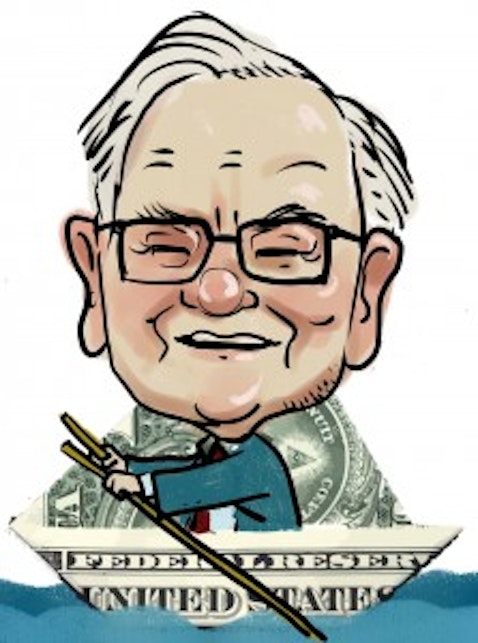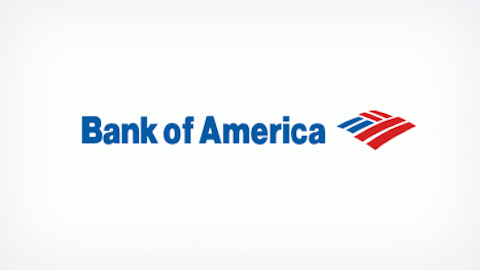Last Friday, Berkshire Hathaway Inc. (NYSE:BRK.B) CEO Warren Buffett released his annual letter to shareholders. Filled with his usual colorful comments on a wide variety of investing topics, the missive will be the topic of conversation among millions of investors in the days and weeks ahead.

Let’s take a closer look at Buffett’s argument and then reveal some investing ideas to take advantage of it.
The big bull-market bet
From 2004 to 2008, Berkshire Hathaway Inc. (NYSE:BRK.B) took on massive amounts of exposure in the options market, selling put options on major stock market benchmarks covering the U.S., U.K., Japan, and Europe. In essence, by selling put options, Berkshire was merely extending its traditional insurance business to provide stock-market-related protection for its counterparties. Berkshire received $4.2 billion from the sale of those put options, and like the rest of the premiums it receives in its insurance businesses, the company turned around and invested those billions in its operating companies and stock holdings.
During the market meltdown of 2008 and early 2009, those put options looked like a terrible move. Berkshire was sitting on a potential $10 billion loss, with the potential for even more losses down the road if the market stayed low through the options’ expiration dates, which now range from 2018 to 2026. But the current intrinsic value on those options has now dropped below the premiums Berkshire Hathaway Inc. (NYSE:BRK.B) received, thanks to the big bull market over the past four years. Moreover, he expects the final amount due under the options to be much less even than the current $3.9 billion figure.
Is long-term option pricing flawed?
An excellent blog post from Brendan Conway of Barron’s Friday afternoon reminded Berkshire investors of the history behind these “Buffett puts.” As Conway notes, Buffett went to great lengths in a previous shareholder letter to describe the pricing inefficiencies of the options markets and how Buffett expected to exploit them.
The root of the problem lies in volatility assumptions made under the commonly used Black-Scholes formula. From day to day or year to year, stocks can move abruptly, and those volatility assumptions tend to get baked into options prices. But over longer periods of time, stock market returns have been smoother, and so Black-Scholes values options more highly than is appropriate — making them better to sell than to buy, especially with puts if you expect the upward trend of the market to continue.
Buffett’s behavior indicates a different view toward long-term options on the buy side. In providing financing to major corporations like Goldman Sachs Group, Inc. (NYSE:GS) and General Electric Company (NYSE:GE), Buffett has usually used options-like warrants to give Berkshire a long-term equity kicker on his investment. His willingness to hold on to those warrants strongly suggests his belief that if volatility on the downside is overestimated, upside volatility gets underestimated — making long-term call options a better buy for investors.
Can you take advantage?
Unfortunately, the deals that Buffett has made typically aren’t available to investors. Publically available long-term options usually run only a couple of years into the future, which isn’t long enough to allow for the market to run an entire bull-bear cycle and for reversion to the mean to occur.
But one area where long-term options are available is in financial stocks. Thanks to the TARP bailouts, five- to six-year warrants are available on several major banks and financial institutions. For Hartford Financial (NYSE:HIG) and Capital One, the warrants are already in the money, meaning that the current share price exceeds the exercise price of the warrant and limits the impact of volatility-estimate errors on the warrant price.
On the other hand, Citigroup Inc. (NYSE:C) and Bank of America Corp (NYSE:BAC) have warrants with strike prices well above current market values for the shares. With all of their value coming from the time value that volatility estimates generate, warrants on these shares are most susceptible to the mispricing that Buffett discusses.
Take a look
Warrants and options are specialized investments and carry substantial risk. But even so, questions about proper long-term pricing raise the possibility that you can use options to your advantage, making them worth a closer look.
The article Warren Buffett and the Mispricing of Long-Term Options originally appeared on Fool.com.
Fool contributor Dan Caplinger owns shares of Berkshire Hathaway and warrants on Bank of America and Hartford Financial. The Motley Fool recommends Berkshire Hathaway and Goldman Sachs. The Motley Fool owns shares of Bank of America, Berkshire Hathaway, Citigroup, and General Electric.
Copyright © 1995 – 2013 The Motley Fool, LLC. All rights reserved. The Motley Fool has a disclosure policy.




